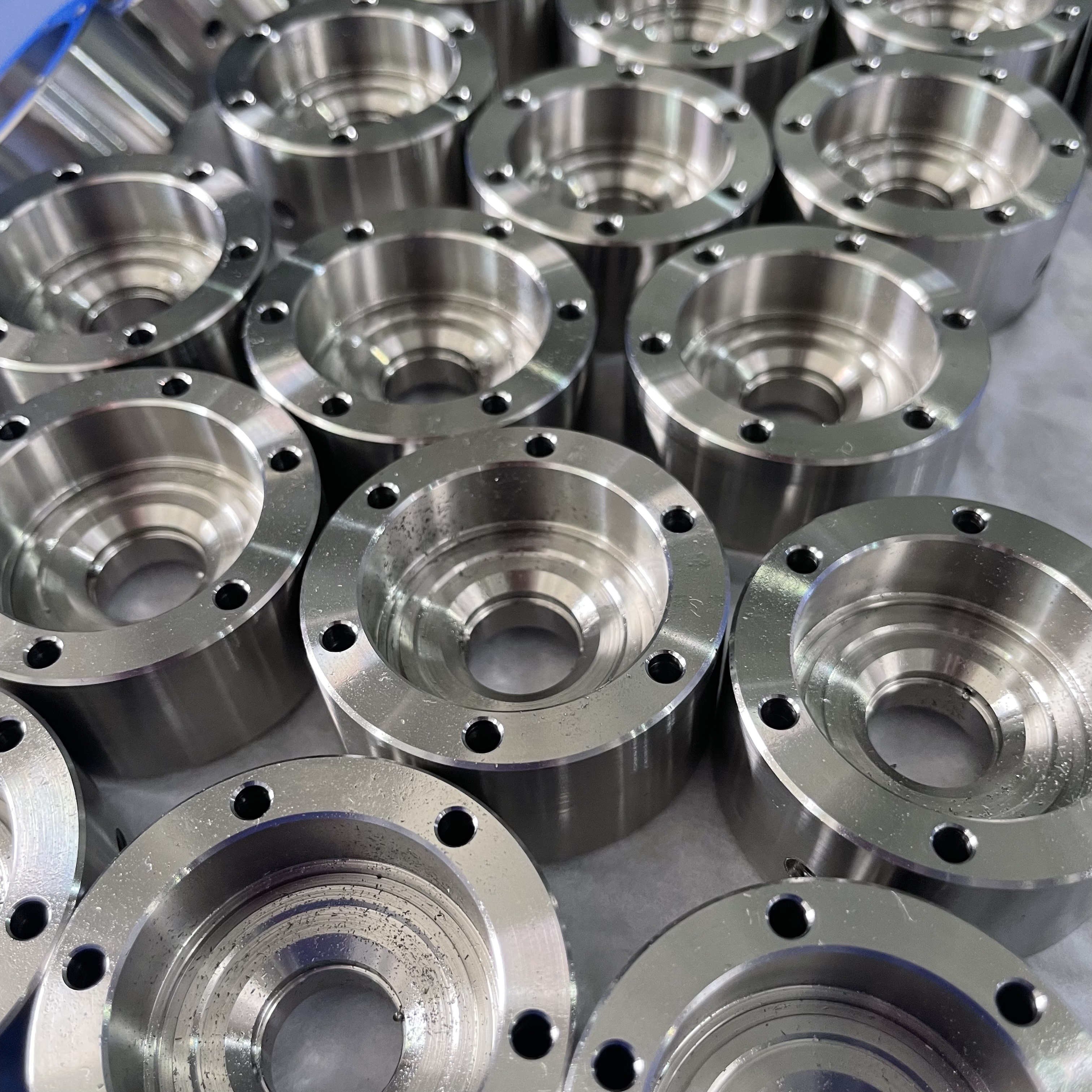Understanding the Causes of Part Processing Deformation in CNC Precision Machining

Introduction to CNC Precision Machining and Part Processing Deformation
CNC precision machining is a cutting-edge manufacturing process that utilizes computer numerical control (CNC) machines to produce intricate and precise parts. The Basics of CNC Machining involve the use of pre-programmed computer software to dictate the movements of the machinery, resulting in highly accurate and consistent output. Precision, the cornerstone of CNC, ensures that components are manufactured with meticulous attention to detail, meeting exact specifications and tolerances.
Understanding part processing deformation is crucial in CNC precision machining. Defining Deformation in Machining refers to the alteration in shape or dimension of a workpiece during the manufacturing process. This can occur due to various factors such as material properties, machining techniques, and external forces. Why Deformation Matters lies in its potential to compromise the functionality and quality of machined parts, leading to rework or rejection.
Exploring the Causes of Part Processing Deformation
In CNC precision machining, part processing deformation can be attributed to various factors that impact the material and structure as well as the operational aspects of machining and clamping.
Material and Structure: The Foundation of Deformation
Material Properties and Their Role
The properties of the raw materials used in CNC precision machining play a pivotal role in part processing deformation. Factors such as elasticity, thermal expansion coefficient, and yield strength significantly influence how a material responds to the machining process. For instance, materials with high elasticity may be prone to spring-back deformation after being machined, while those with low yield strength might undergo plastic deformation under cutting forces.
How Structure Influences Deformation
The structural composition of a workpiece also contributes to part processing deformation. Complex geometries or intricate designs may introduce internal stresses during machining, leading to dimensional inaccuracies or warping. Additionally, variations in wall thickness or irregular shapes can exacerbate deformation tendencies, especially when exposed to cutting forces.
Machining and Clamping: Operational Causes
Incorrect Machining Practices
Improper machining techniques can exacerbate part processing deformation. Inadequate tool selection, excessive cutting speeds, or improper feed rates can generate excessive heat during machining, resulting in thermal deformation of the workpiece. Moreover, suboptimal tool paths or incorrect cutting parameters may induce mechanical stresses that lead to unwanted deformations in the machined parts.
The Role of Clamping in Deformation
Effective clamping is essential for minimizing part processing deformation. Inadequate clamping pressure or uneven distribution of clamping forces can cause workpiece shifting during machining, leading to dimensional inaccuracies or surface irregularities. Furthermore, insufficient rigidity in the clamping setup can result in vibration-induced deformations during cutting operations.
The Impact of Material and Structural Factors
In CNC precision machining, the impact of material and structural factors on part processing deformation is significant. Understanding the properties of materials and the rigidity of structures is crucial in addressing and mitigating deformation issues.
Material Rigidity and Stability
Understanding Material Properties
The material properties directly influence the behavior of workpieces during CNC precision machining. Factors such as hardness, ductility, and thermal conductivity play a pivotal role in determining how a material responds to cutting forces and heat generation. Workpieces with high hardness are less prone to plastic deformation, while those with superior thermal conductivity dissipate heat effectively, reducing the risk of thermal-induced deformations.
The Effect of Stability on Deformation
Stability, in terms of material composition and internal structure, directly impacts deformation tendencies. Homogeneous materials exhibit more predictable responses to machining processes, minimizing the likelihood of unexpected warping or dimensional inaccuracies. Moreover, stable materials with consistent microstructures maintain their shape integrity during cutting operations, reducing the risk of internal stresses that could lead to deformation.
The Influence of Machine Tool Rigidity
Machine Tool Components and Deformation
The rigidity of machine tool components significantly influences part processing deformation. Components such as spindles, tool holders, and guide rails must possess sufficient stiffness to withstand cutting forces without deflecting excessively. Inadequate rigidity can result in tool chatter or vibration-induced deformations on workpieces, compromising surface finish and dimensional accuracy.
The Importance of Contact Surface Integrity
Maintaining contact surface integrity between the workpiece and machine tool is critical for minimizing deformation. Proper alignment and precise contact between fixtures and workpieces ensure uniform force distribution during machining operations. Any deviations in contact surface integrity can lead to localized stress concentrations, potentially causing distortions or irregularities in machined parts.
By comprehensively understanding these material and structural factors' impact on part processing deformation, manufacturers can implement targeted strategies to enhance machining stability and minimize undesirable deformations.
Now let's move onto the next section "Preventing Deformation in CNC Precision Machining".
Preventing Deformation in CNC Precision Machining
After identifying the causes of part processing deformation in CNC precision machining, it is essential to implement proactive measures to prevent such issues and ensure the production of high-quality components.
Selecting the Right Tools and Parameters
Tool Selection Criteria
Choosing the appropriate tools is paramount in mitigating part processing deformation. Manufacturers should prioritize tools with optimal rigidity and cutting edge geometry to minimize heat generation and mechanical stresses during machining. Additionally, selecting coatings that enhance tool durability and reduce friction can contribute to improved surface finish and dimensional accuracy.
Optimizing Cutting Parameters
Optimizing cutting parameters is crucial for controlling part processing deformation. Adjusting parameters such as cutting speed, feed rate, and depth of cut based on material properties and workpiece geometries can help manage heat generation and mechanical loads. Furthermore, employing advanced toolpath strategies, such as trochoidal milling or high-efficiency machining, can distribute cutting forces more evenly, reducing the risk of deformation.
Advanced Strategies for Deformation Prevention
Thermal Deformation Management
Managing thermal effects is vital in preventing part processing deformation. Employing cooling strategies such as through-tool coolant delivery or air blast systems can effectively dissipate heat during machining, minimizing thermal-induced deformations. Additionally, utilizing thermally stable tool materials and coatings can mitigate temperature-related dimensional inaccuracies.
Utilizing Predictive Technologies for Clamping
Leveraging predictive technologies for clamping systems can significantly reduce part processing deformation risks. Implementing sensor-based clamping force monitoring allows real-time adjustments to maintain consistent workpiece fixation throughout machining operations. Furthermore, integrating smart clamping solutions with adaptive control mechanisms enables dynamic force modulation to counteract potential workpiece shifts or vibrations.
See Also
Grasping CNC Machining for Precise Parts Production
Acquiring Expertise in CNC Machining for Accurate Part Production
Influencing Production Costs with CNC Precision Part Processing
Investigating How Machining Technology Affects Part Processing Precision
Comprehending the Order of Precise Mechanical Parts in CNC Machining
About US
Follow Us
Your prototype holds unparalleled significance, and we deeply value its uniqueness. Collaborating with you during the preparation phase for running your prototype or parts is a commitment we gladly embrace. Whether it's a single part or a complex assembly, we are dedicated to selecting the optimal tools and pathways to bring your envisioned product to life.
At Precision Fab CNC Machining, we specialize in producing parts for prototypes, short runs, and high-volume production. Our prototyping machine capabilities extend across metal, plastic, and wood machining, with welding fabrication services available to complement and finalize your prototype if required.
Address
Address: Room320 10F, Building A,Nanshan international building, Dayawan District, Huizhou, Guangdong, 516001 China
Contacts
billy@timaycnc.com

